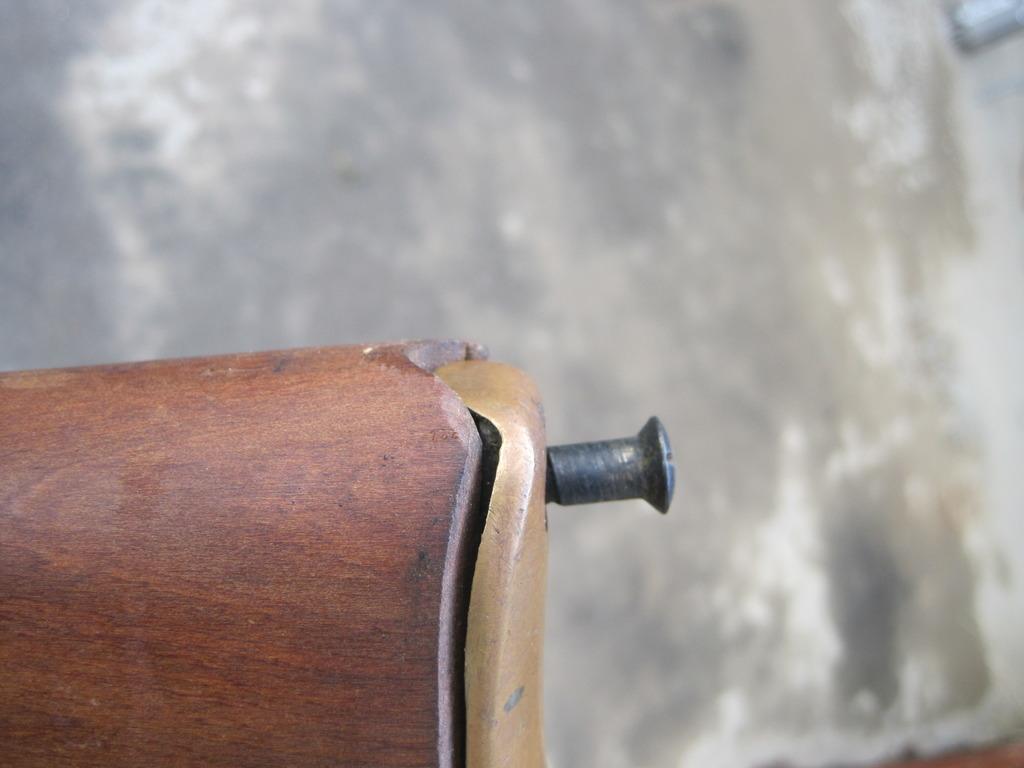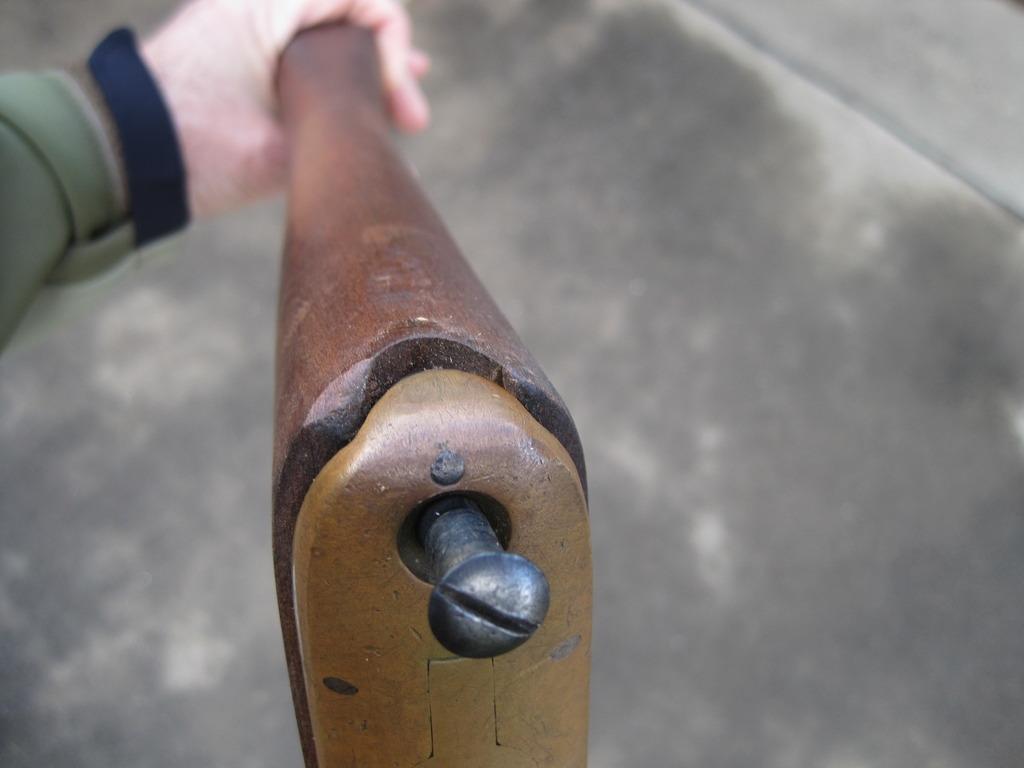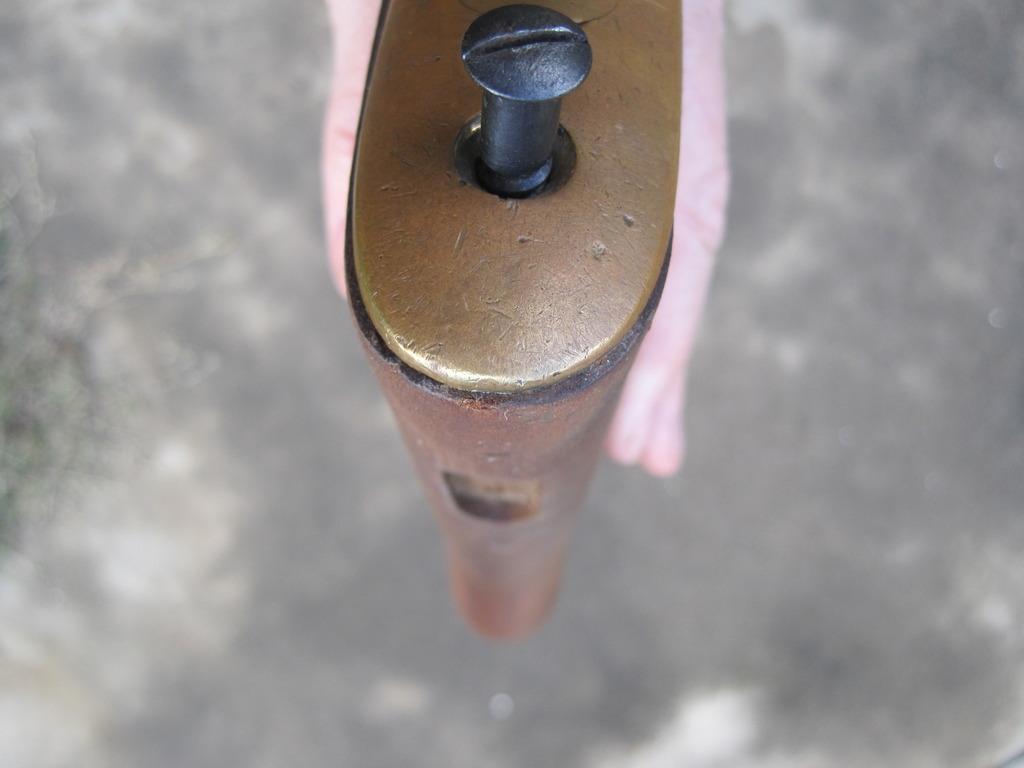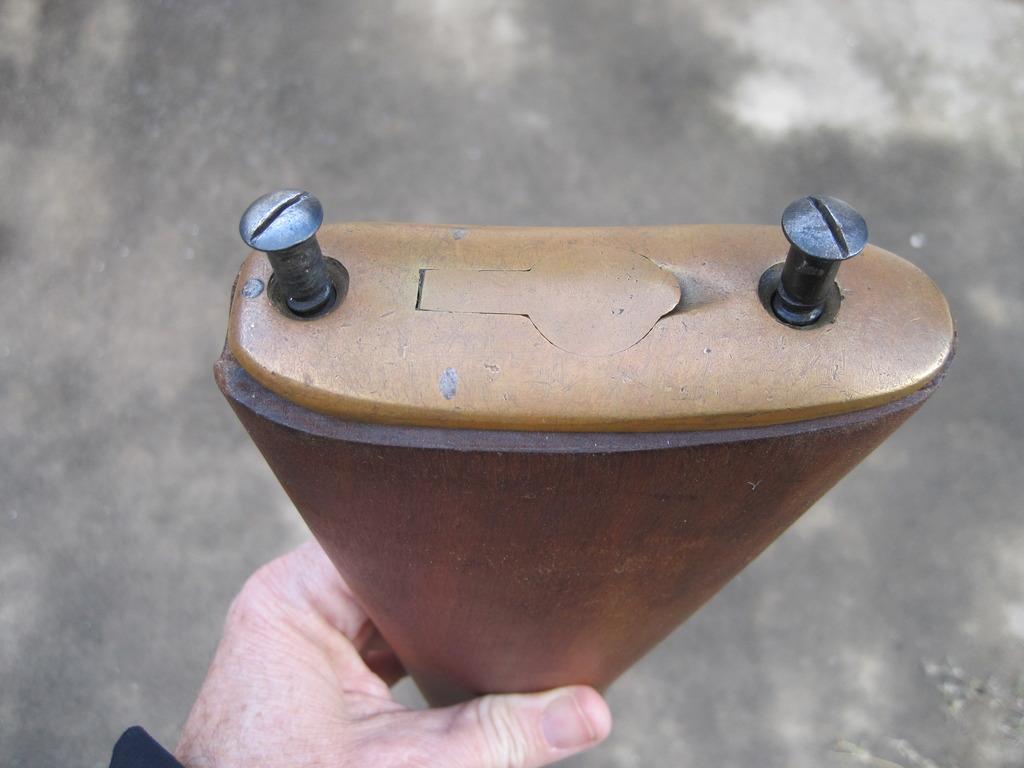-
FREE MEMBER
NO Posting or PM's Allowed

LE #1 Butt Plate -- Different sizes for different length butstocks?
Hi all. New member. I'm not exactly a collector of LEs, but I have owned two for a number of years. A #1 Lithgow from '42, and a #4 Mk1 from '49.
from '42, and a #4 Mk1 from '49.
My question is about the brass butt plate. I recently purchased a "Long" buttstock to try on my Lithgow, which currently has a "Regular" length buttstock. The new Long one is in perfect condition, Aussie coachwood. But it's taller at the back end than the butt plate I have on the rifle now. I was wondering about this when I purchased the longer buttstock; makes sense that a longer stock might also be taller. But I have not been able to find any evidence of different sized butt plates for either the #1 or the #4 LEs, let alone any such sized parts being sold. What say you genuine collectors on this subject?
Information
 |
Warning: This is a relatively older thread
This discussion is older than 360 days. Some information contained in it may no longer be current. |
|
-
01-07-2016 10:27 AM
# ADS
Friends and Sponsors

-
Legacy Member

I fitted a 'S" short butt to a 1918 No 1 Mk 3 de-sporter project I recently finished and noticed the same trend. I checked against two butt plates I had around, one was cast-zinc and the other was brass, both fitted the same way you describe with the long butt. From my reading of Skinnerton's book I do not recall any mention of different sized plates, I am sure someone can verify that as a second.
- Darren
1 PL West Nova Scotia Regiment 2000-2003
1 BN Princess Patricia's Canadian Light Infantry 2003-2013
-
-
-
The butt plates are all the same size. The difference you will see is in the angle of the butt from the toe to the small of the butt.
What you may notice is that the butts all differ slightly and Armourers always had to fit butt plates to the individual weapon. They like to get the butt plate to just sit inside the end profile of the butt so it wasa qui9te common to file a butt plate down to suit the butt
-
Thank You to Peter Laidler For This Useful Post:
-
Legacy Member

The wood should be proud of the butt plate not flush
-
The Following 2 Members Say Thank You to Bindi2 For This Useful Post:
-
FREE MEMBER
NO Posting or PM's Allowed

What you may notice is that the butts all differ slightly and Armourers always had to fit butt plates to the individual weapon.
The butt plates are generally all the same for both No.1 and No.4 rifles (one of the few parts that are interchangeable, from what I understand). The problem, as Capt. Laidler implies, is that manufacturing techniques around the world often produced a more generous portion of wood than necessary for an instant perfect fit. Be prepared to plane, file, and sand the stock to fit the butt plate. The problem this might create is the destruction of the wood patina where you cut off the old oxidized wood. Staining is one approach that might work. Another way to go is to attempt to oxidize the wood with a propane torch, using the very soft touch of a wide flare flame. Go slow, moving the torch across the surface, trying not to burn the wood, and if you do, go over the scorched area with steel wool, gradually taking off the burned area until it matches the patina.
Last edited by Seaspriter; 01-07-2016 at 07:04 PM.
-
FREE MEMBER
NO Posting or PM's Allowed

-
FREE MEMBER
NO Posting or PM's Allowed

I might do something along the lines of what Seaspriter describes. Ultimately it'll be getting many thin coats of BLO .
.
It's a nice piece. "New" technically, as a replacement that was never used. Marked "SLAZ 54". Guessing that means it was made by Slazengers wood shop in '54.
Here is a pic of the left side. Has a few handling/storage scratches. Not surprised and I don't really care about that. It's going to get some mount of sanding anyway.
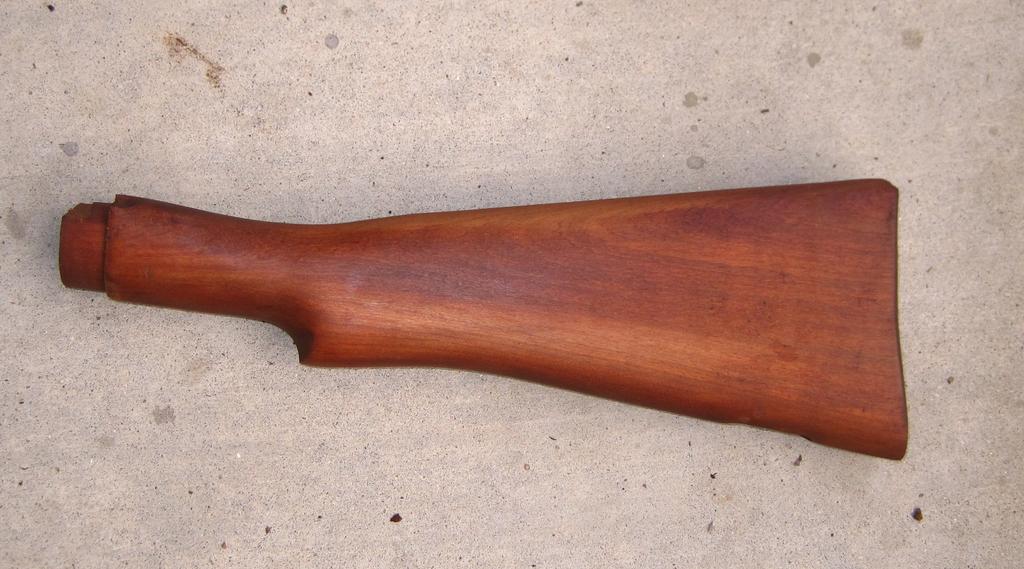
-
Legacy Member

The idea was that wood gets shabby a lot faster than metal.
So, if you make the butt oversized, there is a fair bit of "fair wear and tear" that can occur and be easily dealt with by basic woodworking skills.
The recoil is transferred via the buttplate, and it certainly doesn't exactly fit "the fleshy part of the shoulder" with precision, either.
The buttplate on a Lee Enfield is there to stop the wood getting smashed up either on the parade ground (not that the butt should EVER strike the ground with force if the movements are performed correctly), or on the battlefield.
It also allows the inclusion of the nifty little trap that retains your basic cleaning gear, not to forget, easy access for the armourer's big screwdriver.
When things go really pear-shaped, it also serves as the striking edge of a very expensive fighting stick / club.
Buttplates generally require a small amount of "fitting", but it's not a big job.
If the brass / mazak etc. plate overhangs the wood, it becomes a snag hazard for all manner of things, webbing, for starters.
etc. plate overhangs the wood, it becomes a snag hazard for all manner of things, webbing, for starters.
If you look at the blunt end of a correctly presented specimen of Mr. Garand 's rifle, you will see that the wood overhangs the fancy steel buttplate as well.
's rifle, you will see that the wood overhangs the fancy steel buttplate as well.
-
-
Contributing Member


Mrgriso, would appreciate your Lithgow info for the Lithgow Survey, located in the stickies at the start of this forum page.
info for the Lithgow Survey, located in the stickies at the start of this forum page.
-
-
That the No1, Lanchester and No4 butt plates are interchangeable is not strictly correct.according to our (UK ) instructions - so I presume the same will apply to the rest of the Commonwealth nations too. We could fit No4 butt plates to No1 rifles (and did to Navy Lanchesters too.....) after slightly modifying the heel recess (thread 6, top photo....) in the butt to accommodate the larger radiussed (?-word) No4 butt plate overhang. But fitting No1 butt plates to a No4 rifle was not permitted
) instructions - so I presume the same will apply to the rest of the Commonwealth nations too. We could fit No4 butt plates to No1 rifles (and did to Navy Lanchesters too.....) after slightly modifying the heel recess (thread 6, top photo....) in the butt to accommodate the larger radiussed (?-word) No4 butt plate overhang. But fitting No1 butt plates to a No4 rifle was not permitted
-
The Following 2 Members Say Thank You to Peter Laidler For This Useful Post:
from '42, and a #4 Mk1 from '49.















 Register To Reply
Register To Reply










